50 Words or Less
The Callaway Elyte fairway wood has excellent ball speed and very strong forgiveness. Consistent launch with fairly low spin. Step Sole is a significant improvement for turf interaction.

Introduction
When you’ve proven that you can make the fastest fairway woods, how do you continue pushing the category forward? That’s the question that Callaway faced heading into 2025. They answered with a combination of internal and external technologies designed to clean up turf interaction and boost forgiveness to even higher levels. I tested the new Callaway Elyte fairway wood to see if it keeps the brand among the very best in this category.
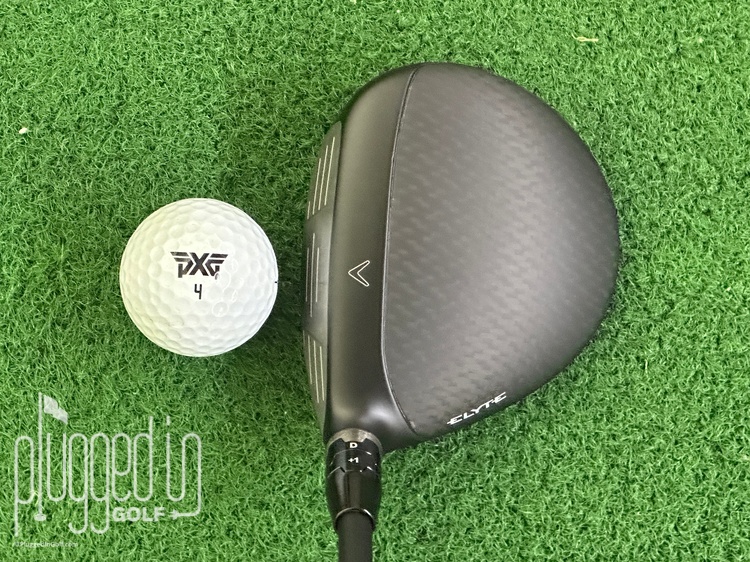
Looks
As with the Elyte driver [review HERE], the first thing that caught my eye when I set down the Callaway Elyte fairway wood was the Thermoforged Carbon crown. I don’t think it’s inherently more distracting than other carbon fiber crowns, but it’s different enough that my eye was really drawn to it for a while.
In terms of shape and size, the Elyte FW is symmetrical and round, sized perfectly to appeal to the biggest range of golfers. The face is fairly shallow, which is important to me if I want to be confident hitting it off the turf.
If you prefer a taller face, check out the Callaway Elyte Titanium fairway wood HERE
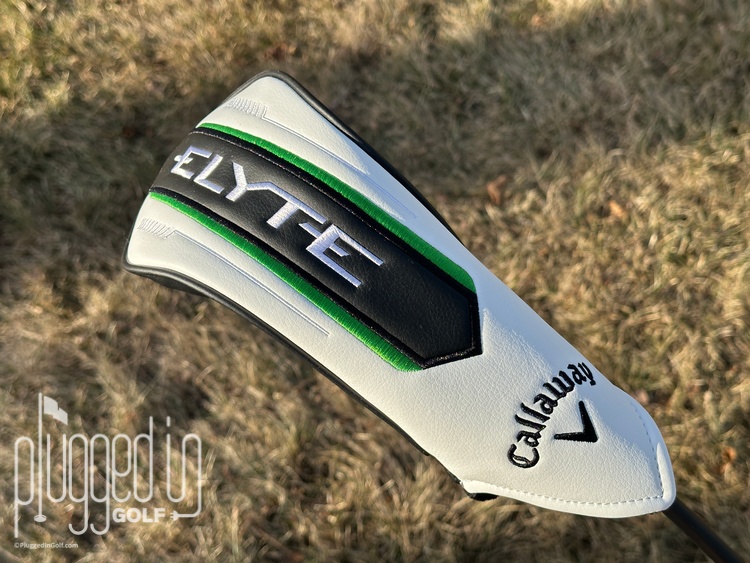
In the bag, the Callaway Elyte fairway wood puts the focus on its headline feature without calling it out by name. The Step Sole is situated at the point of a silver V on the mostly-black sole. That same V wraps around a stylized “E” with the Callaway logo, Elyte branding, and club designation on the toe and heel. There are just two small slashes of green, but they’re enough to give the club significant personality.
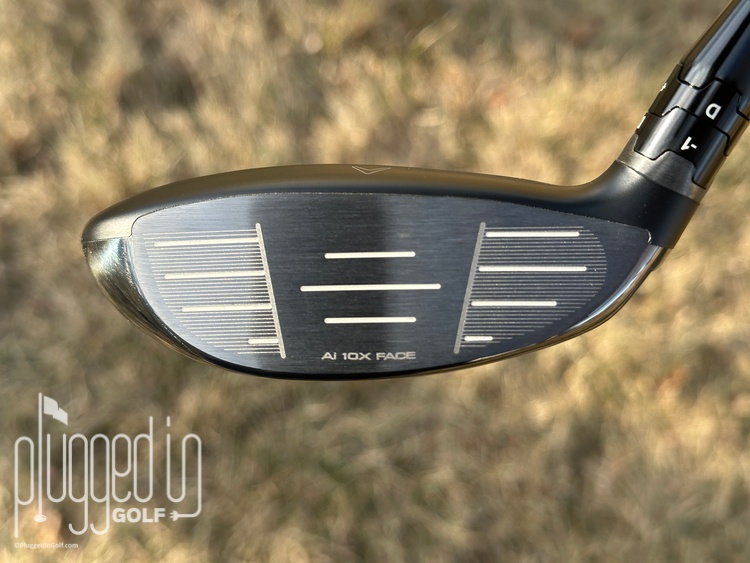
Sound & Feel
Every OEM wants to make their clubs sound fast and powerful, but no one wants to turn the volume up to 11 and invite comparisons to the old Nike SUMO drivers. That can be a tough needle to thread, but the Callaway Elyte fairway wood does it. Centered contact creates a whip crack sound that makes a big impression despite being only average in volume. Your hands get a similar sensation, like you’ve slapped the ball into orbit.
The fantastic sound and feel of pure strikes provides a stark contrast for mishits. When you move more than a hair off center, the sound devolves into a quiet “tink.” This isn’t a bad or ugly noise, but it lacks the guttural satisfaction of centered shots. Similarly, the feel becomes thinner and weaker, a stern note that you left something on the table.
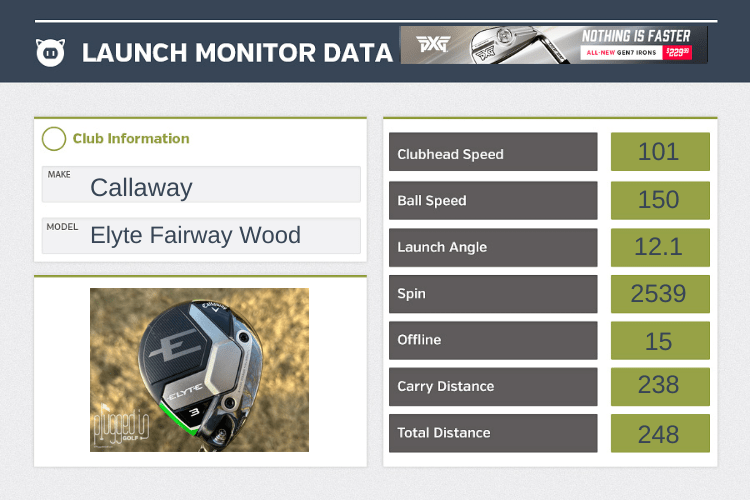
Performance
Callaway has five different Elyte fairway wood models available – a potentially overwhelming amount of options. To differentiate them, they created this excellent chart HERE. Typically, when OEMs describe their own products, there’s always something I take issue with, but Callaway’s take on the standard Elyte fairway wood is unimpeachable. Let’s go through the key points.

As I noted in the intro, the Callaway Elyte fairway wood had big shoes to walk in when it came to ball speed. The new Ai 10X face delivers with elite speed on center and off. There were stretches of my testing where my ball speed was plus or minus just 1 MPH – a level of consistency I do not expect with a fairway wood in hand. And to be clear, the impact tape told me the credit falls more to the club than the person swinging it. “High” forgiveness, indeed.
Find maximum forgiveness in the Callaway Elyte X fairway wood HERE
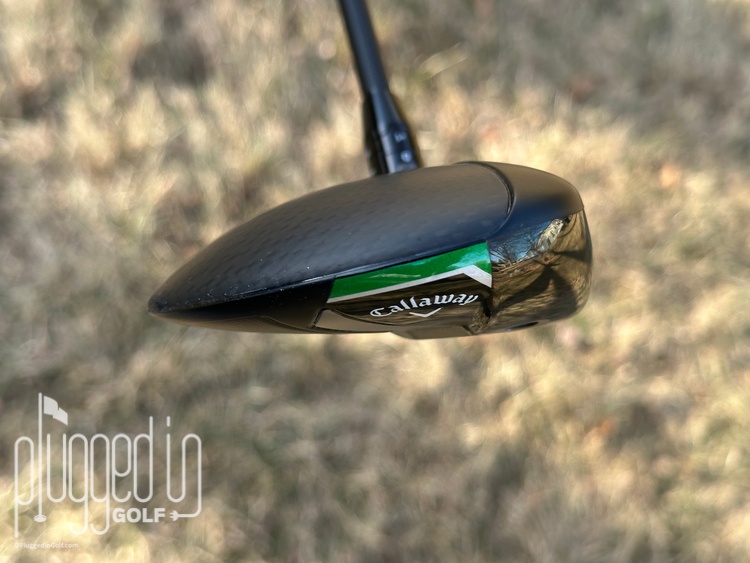
Callaway bills the Elyte fairway wood as “Mid-High” launch with “Low” spin, which matches what I saw in my testing. As a low launch player, I never saw the ball hit a towering trajectory, but it was on the higher end of what I’ve come to expect from a 3W. More importantly, my thin strikes weren’t penalized with low single digit launch angles. Across the face, both the launch and spin stayed in fairly tight windows and created predictable, long flights.
Need lower spin? Check out the Callaway Elyte Triple Diamond fairway wood HERE
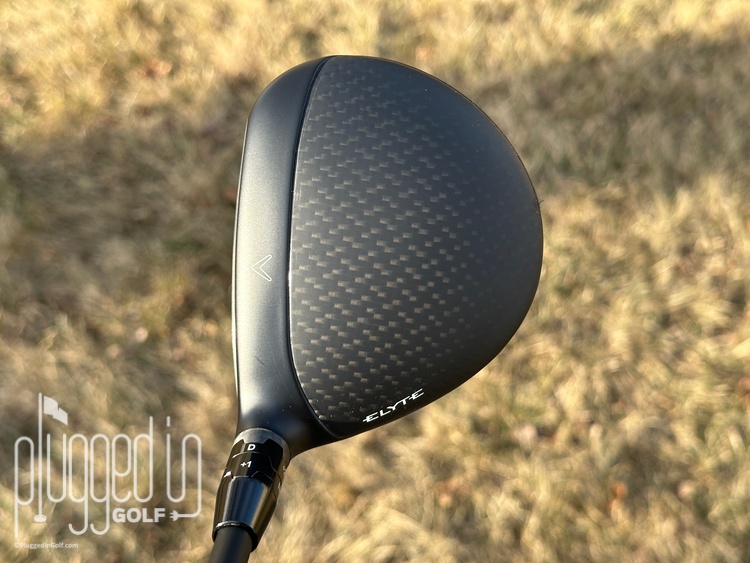
The one claim that I had eyed a little suspiciously was “Neutral Flight.” Typically, I find that the standard model claims neutrality but favors a draw. Not so with the Callaway Elyte fairway wood. This club has no preference right or left, leaving me in total control of my shot shape. The lack of bias also makes the adjustable hosel* more impactful because you can use the full range to create the shot you want, not just negate something you don’t want.
*The adjustable hosel is available only in the 3 and 3HL models.
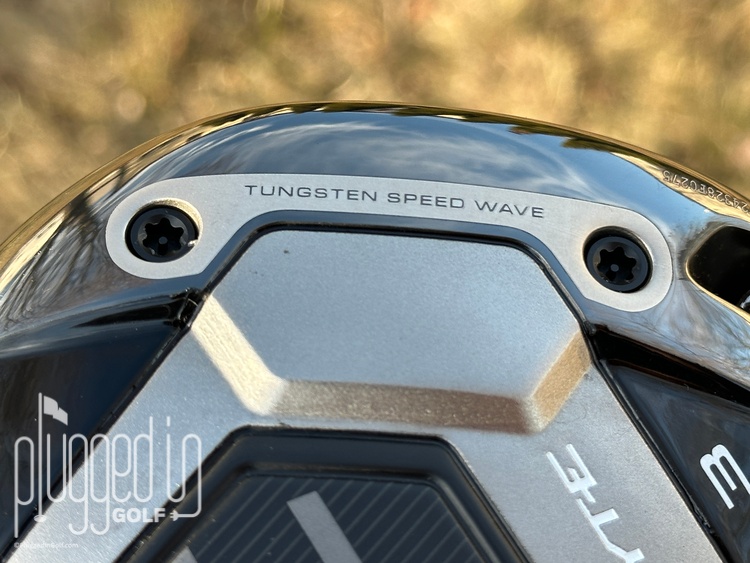
Saving the best for last, the Step Sole design creates a noticeable improvement in the turf interaction. Callaway states that it allows for “57% less turf interaction” compared to the Paradym Ai Smoke fairway wood [review HERE]. Obviously, I can’t refute or support that specific number, but, as someone who can get little heavy into the turf, I could easily feel the benefits of this design. On good swings, the sole coasts along the ground without resistance. On poor swings, I got more speed to the ball because less of the sole was dragging through the dirt.
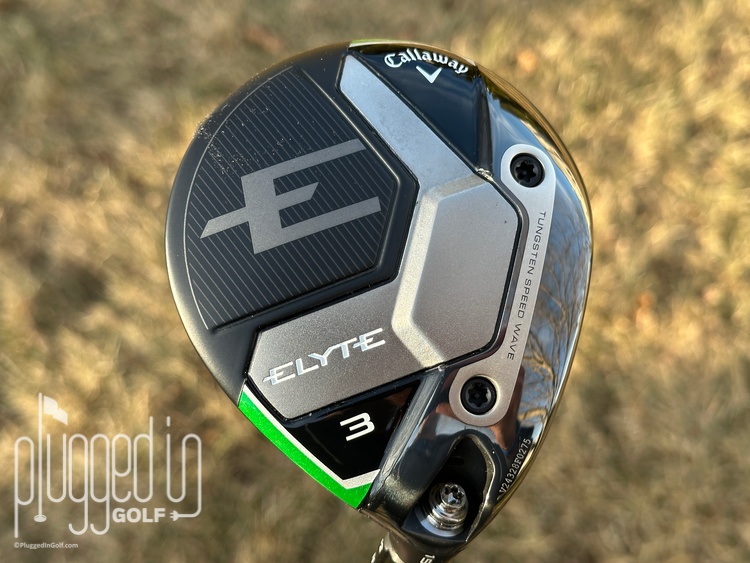
Conclusion
“Total performance” may sound hyperbolic, but it’s a fair description of the Callaway Elyte fairway wood. This club has the high end ball speed Callaway has become known for along with robust launch and spin and a meaningfully improved sole design. Find the right loft and shaft, and you’ll have a par 5 scoring weapon in your bag.
Support Plugged In Golf, Buy HERE
Callaway Elyte Fairway Wood Price & Specs

He founded Plugged In Golf in 2013 with the goal of helping all golfers play better and enjoy the game more.
Matt lives in the northwest suburbs of Chicago with his wife and two daughters.
- PXG Lightning Tour Mid Driver Review - December 24, 2025
- Scotty Cameron Phantom 5 Putter Review - December 23, 2025
- Vice Golf VGI02 Irons Review - December 22, 2025

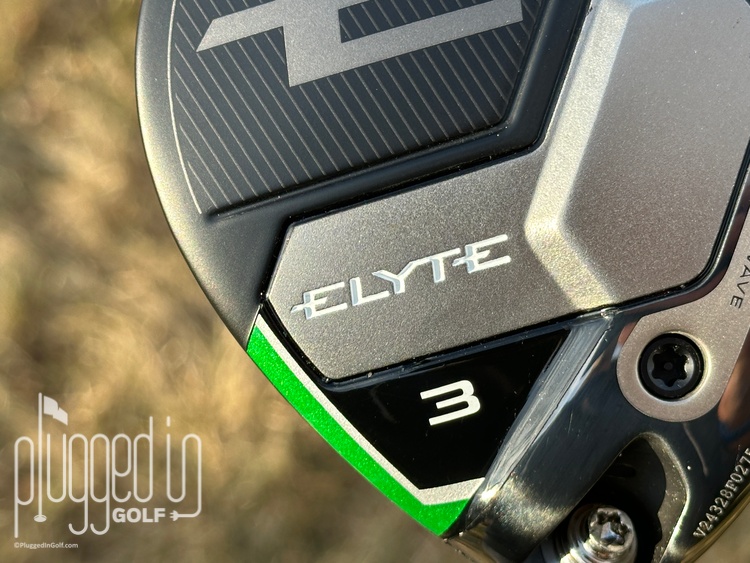







2 Comments
If you’re reviewing some of the other models, will you get a chance to hit the artera ec1 shaft?
Noah,
I have a review of the EC1 coming out in about two weeks.
Best,
Matt